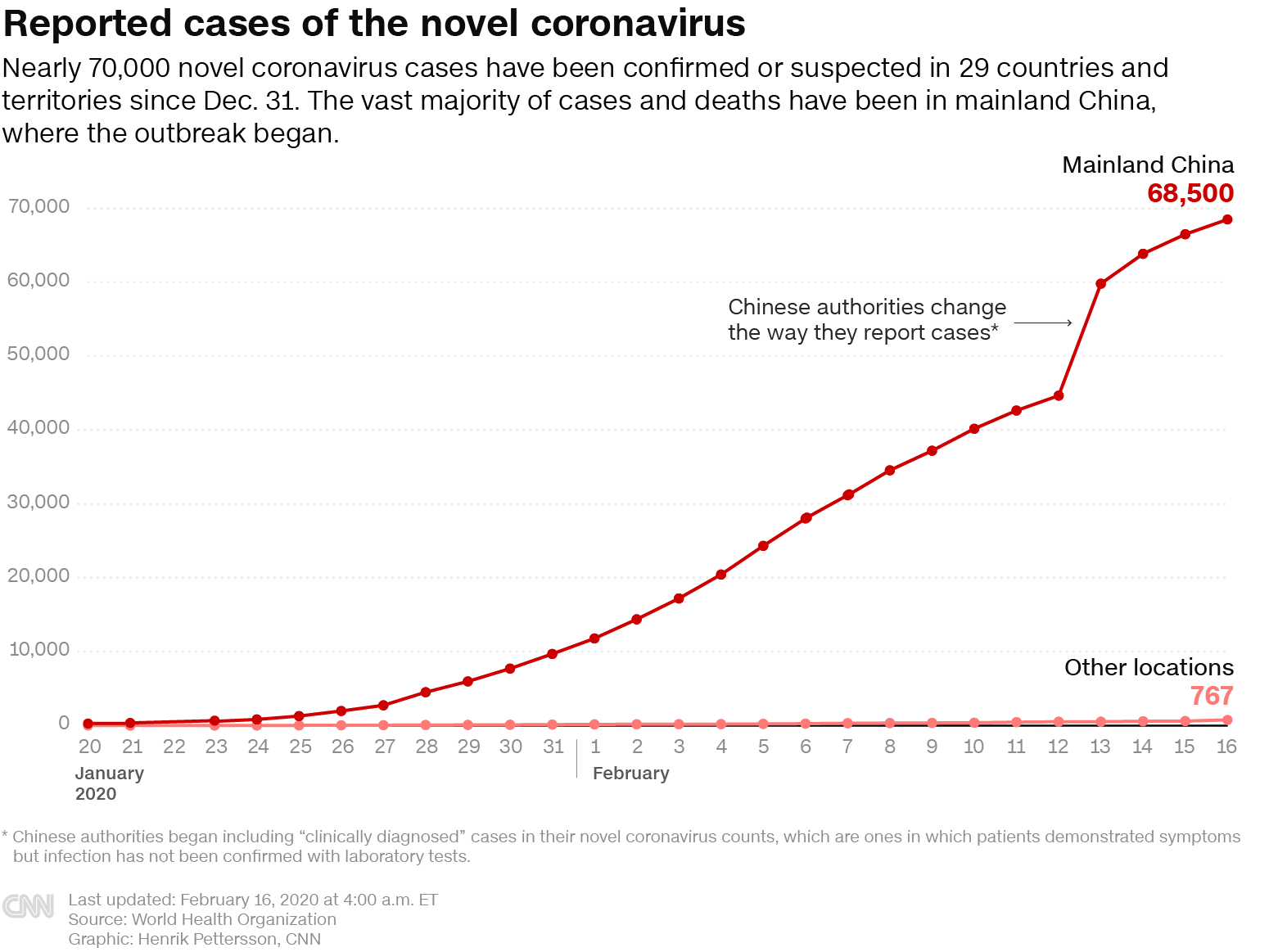Health experts sounded the alarm Friday over the worldwide threat of the coronavirus, with officials warning of its “likely” community spread in the United States and the World Health Organization cautioning that “the window of opportunity is narrowing” for containing the outbreak worldwide. The COVID-19 coronavirus, which erupted in China in December, has killed at least 2,360 people and sickened at least 77,900 worldwide, the majority of cases in mainland China. Dr. Nancy Messonnier, director of the CDC’s National Center for Immunization and Respiratory Diseases, told reporters Friday that U.S. health officials are preparing for the coronavirus to become a pandemic.
“We’re not seeing community spread here in the United States, yet, but it’s very possible, even likely, that it may eventually happen,” she said. “Our goal continues to be slowing the introduction of the virus into the U.S. This buys us more time to prepare communities for more cases and possibly sustained spread.”
She said the CDC is working with state and local health departments “to ready our public health workforce to respond to local cases.” These measures include collaboration with supply chain partners, hospitals, pharmacies and manufacturers to determine what medical supplies are needed. She said the “day may come” here where we have to shut down schools and businesses like China has done. Meanwhile in Geneva, the director-general of the World Health Organization, alarmed by the recent spread of the coronavirus from Iran, warned Friday that while the chance to contain the virus globally still exists, “the window of opportunity is narrowing.”
“We still have a chance to contain it, but we have to prepare for other eventualities,” said Tedros Adhanom Ghebreyesus. “This could go in many directions, it could be even messy.
It is in our hands now … we can reverse or avert serious crisis. If we don’t, if we squander this opportunity, then there could be a serious problem on our hands.” Among other measures, Tedros called for financial aid to help countries fighting the virus to buy critical medical equipment and to strengthen their health systems. The world community, he said, has a “fighting chance” to contain the spread of the virus, but we “must not look back and regret that we failed to take advantage of the window of opportunity that we have now.” Tedros, speaking to reporters in Geneva, said the new cases in Iran show how the virus, which originated in Wuhan, China, is now moving not only to second countries, but to third countries in a lengthening chain of transmission. “The cases that we see in the rest of the world, although the numbers are small, but not linked to Wuhan or China, it’s very worrisome,” Tedros said. “These dots are actually very concerning.”
The Global Health Security Index, which was issued last year, found that only 13 of nearly 200 countries score in the top tier, suggesting that most of the world would struggle to deal with a major outbreak of a deadly infectious disease such as Ebola.
The index is a project of the Nuclear Threat Initiative (NTI) and the Johns Hopkins University Center for Health Security, with research by The Economist Intelligence Unit. The CDC reported that at least 35 people in the United States are infected with the virus. Of those, 14 were travelers who fell ill after returning from a trip abroad, while 21 were were people “repatriated” by the State Department. Messonnier, of the CDC, said more infections are expected from among passengers on the Diamond Princess cruise ship and are in quarantine. She said they are “they are considered at high risk for infection” because they may have come in contact with infected persons on the ship.

